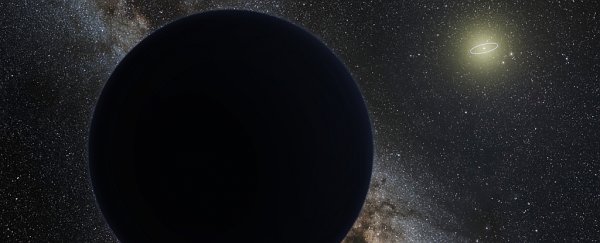In the far reaches of the Solar System, objects go into some weird orbits, and astronomers have been baffled as to why.
The most intriguing possibility has been that of a huge, unseen planet lurking out there way beyond Neptune. But now a new explanation has emerged, putting a massive dent in the idea of this so-called Planet Nine.
Instead of being tugged on by a giant invisible planet, those Solar System objects could have jostled each other like bumper cars, which has knocked some of them into new orbits - so say researchers from the University of Colorado Boulder.
The Planet Nine hypothesis was first announced in 2016, after researchers noticed that some of the space rocks out past Neptune, known as trans-Neptunian objects (TNOs), have unusually looping orbits, "detached" from the strong gravitational influence of the larger gas giants in the Solar System.
The orbits of these detached objects clustered together in a way that didn't seem random - but a huge planet way out beyond Pluto, many astronomers agreed, could have tugged them into the observed configuration.
The hypothetical Planet Nine, according to calculations, would be a gas giant with about 10 times the mass and four times the size of Earth, with an enormous orbit that would take between 10,000 and 20,000 years to complete.
So far, nobody has seen it. But lack of visual evidence isn't necessarily strange.
We don't know exactly how far away it is, for a start, so we don't know exactly where to look. However, it would have to be rather distant, and since planets don't emit light, it would be very dark - which means it would be difficult to see even if our telescopes were pointing in just the right direction.
Of course, Planet Nine may simply not exist, and this is where the new hypothesis comes in. According to astrophysicist Ann-Marie Madigan and colleagues, the sheer number of objects out there in the Kuiper belt could account for the orbital weirdness.
"There are so many of these bodies out there. What does their collective gravity do?" she said. "We can solve a lot of these problems by just taking into account that question."
One particularly vexing object is a minor planet called Sedna. It's way out past Pluto on an 11,400-year orbit (Pluto's is 248 years) that is more circular than what we'd expect to see.
It was the dynamics of detached objects like Sedna that astrophysicist Jacob Fleisig was studying when he noticed, according to his computer simulations, that occasionally they came into alignment, like the hands of a clock.
"You see a pileup of the orbits of smaller objects to one side of the Sun," he said. "These orbits crash into the bigger body, and what happens is those interactions will change its orbit from an oval shape to a more circular shape."
If it's so simple, why hasn't it been done before? According to the researchers, it's computationally expensive to include a mass for TNOs in their computer simulation.
Also, current estimates put the mass of the Kuiper belt at just 4 to 10 percent of Earth's mass (although according to Solar System formation models, it should be much higher). This means that the Kuiper belt objects might not exert enough gravity on each other for the orbital effects observed.
According to the team's calculations, the presence of thousands more unseen objects is necessary. And the fact that the orbits all tilt the same way - neatly explained by Planet Nine - cannot be explained by the collective gravity hypothesis.
On the other hand, we do have direct images of Sedna, which is less than 1,000 kilometres (622 miles) in diameter (less than half the size of Pluto). So if Planet Nine is lurking out there somewhere, it is being very elusive.
Maybe the James Webb Space Telescope will help provide an answer. In the meantime, we'll probably keep daydreaming about a mysterious planet, somewhere out there, in our Solar System, unseen and all alone.
The team presented their research on 4 June at the 232nd meeting of the American Astronomical Society in Denver, Colorado.
